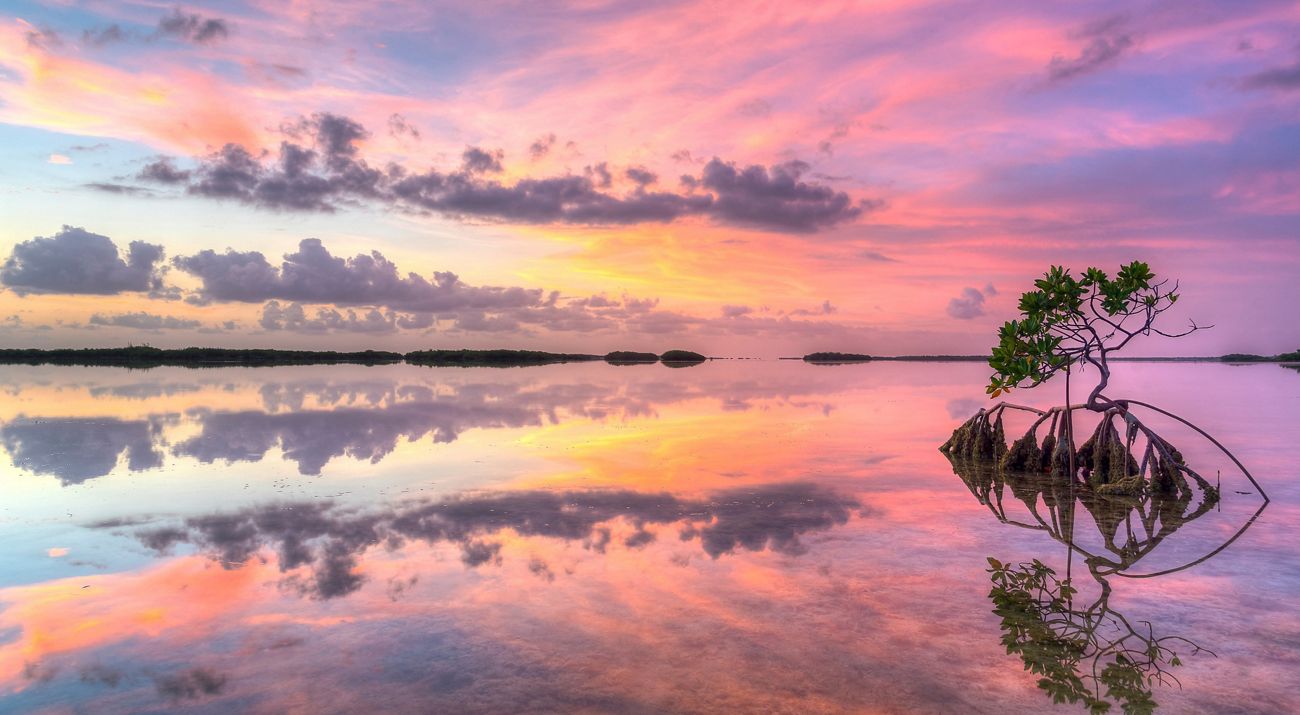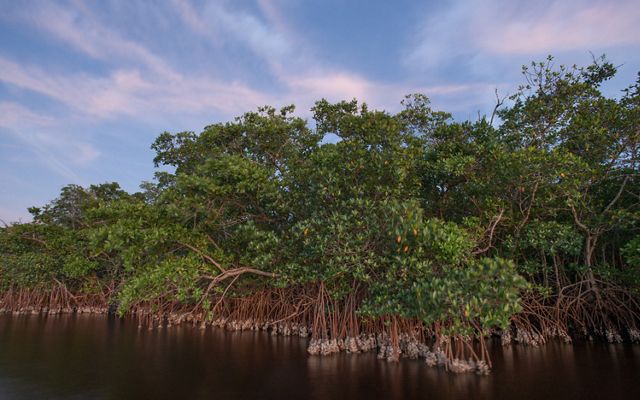
In a TNC study on sea-level rise, areas of Big Pine Key will be under water in a matter of decades. The second largest of the Florida Keys, Big Pine is best known as home to the Key deer.
Hurricanes Wilma and Irma demonstrated clearly how serious the risks of rising seas and storm surges are for land near sea level. Here in Florida, the Florida Keys tell the story of rising seas better than most places, with 90% of the land mass at five feet above sea level or less.


Homes, businesses, infrastructure and people, as well as natural areas and native species are affected by sea-level rise today and may be impacted by storm surge at any time.
TNC recognizes this risk and has taken action, working with academics and federal, state, county and local government land managers, planners and elected officials on recommendations to address the problems.
Quote: Chris Bergh
The Nature Conservancy wants nature and people to continue to coexist in the Keys for as long as possible.
Coastal Resilience
Now the new coastal resilience map for Southeast Florida provides all the latest information to allow anyone to see it. Users select a base map or satellite photo and features of interest to see how they relate to sea-level rise and a simulated storm surge using a future scenarios mapper.
“The Nature Conservancy wants nature and people to continue to coexist in the Keys for as long as possible,” says Chris Bergh, TNC Florida's field program director based on Big Pine Key. “This tool will help us do that by making it easier to visualize the risks involved and develop concrete plans to actively reduce those risks.”
Hurricane Irma in 2017 gave the Keys a painful taste of the future. “With Irma,” notes Bergh, “there was so much flooding from storm surge—so much property damage and impact on natural areas—that it was like a sudden preview of what sea-level rise could do to the Keys. It got people thinking.”


Sea-Level Rise
To find out how much or how little margin there really might be for adapting to rising seas, a team of researchers in the Keys, led by Bergh, collected high-resolution elevation data of Big Pine Key and the best-available elevation data for the remainder of the Keys and combined that with the various projections of sea-level rise prepared by the UN’s Intergovernmental Panel on Climate Change and others.
The results were startling: Even the most conservative scenario of a seven-inch rise in sea level by 2100 would equate to dramatic changes in habitat for plants and animals.
Further refinement of the research, with even more detailed elevation data, led by Florida International University, shows the property value of the land at risk of inundation from five feet of sea-level rise is about $27 billion, with 56,000 residents and 76,000 acres impacted.
Bergh cites several studies, including the empirical evidence of the tide gauge at Key West, one of the longest continuous records of its kind in the U.S.


Future Scenarios
And then there is the National Oceanic and Atmospheric Administration “2022 Sea-Level Rise Technical Report” finding that “Sea level along the U.S. coastline is projected to rise, on average, 10 - 12 inches (0.25 - 0.30 meters) in the next 30 years (2020 - 2050), which will be as much as the rise measured over the last 100 years (1920 - 2020).”
Now what is there to be done about this dire situation?
TNC is particularly focused on making use of “green infrastructure” to minimize erosion and flooding.


“Coral reefs, mangroves, beaches and marshes help protect the islands and our communities at a fraction of the cost of seawalls, breakwaters and engineered stormwater management systems and with added benefits for fishing, diving and our tourism economy in general,” Bergh says. “We need to recognize the value of these natural features and continue to protect and restore them, and even move into actively creating them in some cases, so they can provide for us.”
This new tool will help people understand the individual and combined impacts of sea-level rise and storm surge in the Keys by seeing it with their own eyes in map form.
For the coastalresilience.org future scenarios mapper, TNC used the best available elevation data and added other features of interest, such as the ranges of protected species, infrastructure locations and critical facilities like hospitals. Users can model sea-level rise of one foot to four feet, a simulated surge from a storm like Hurricane Wilma, or combinations of rise and surge. Practical plans can be developed with the help of the tool.
“We can move from the excellent general plans developed to date into the specifics and identify exactly which stretches of road or which patch of Key deer habitat needs help, how much that help is going to cost and how we are going to pay for it,” Bergh says.


Time to Call the Moving Truck?
“Well, not quite,” says Bergh, who lives on Big Pine Key with his family. “These studies are about hope, not fear. Experience has shown that we can bounce back from hurricanes with the help of good planning, professional emergency managers, proactive elected officials and informed citizens who know what to do and when to do it in order to stay safe and recover quickly.”
The point is to make people aware of the magnitude of the challenge and encourage them to action while we still have time to act to reduce global greenhouse gas emissions and deforestation, which would limit the amount of sea-level rise, and to develop and implement local plans to help nature and people resist and adapt to sea-level rise.
“By using our community’s storm preparedness and response experience as a blueprint along with TNC's coastalresilience.org website and future scenarios mapper to help fill in the details, we can show the world that the Florida Keys are ready for the challenge of sea-level rise,” Bergh says.
Learn more at coastalresilience.org and help us continue our conservation work in Florida.

We Can't Save Nature Without You
Sign up to receive Nature News and updates from Florida. Preview Nature News